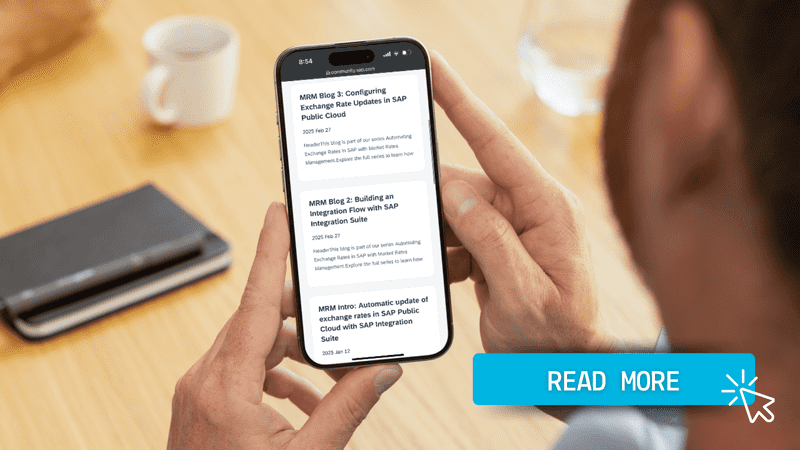This process is crucial for maintaining real-time, accurate, and reliable information within your enterprise system. „It's great to see how this automation process is becoming a key component for every organization. Not only does it save time and costs, but it also eliminates human errors that may occur when entering data manually. I believe that automating exchange rates is one of the steps businesses need to take for their digital transformation,“ says Jan Tůma, Integration Architect at SAP.
Set up communication system in SAP Public Cloud
The first step in the integration is to set up the communication system between SAP Public Cloud and SAP Integration Suite. This allows the exchange of exchange rate data between the systems.
How to do it?
- Log in to SAP Public Cloud.
- Go to the Manage Communication Systems section and click New.
- Enter the following details:
- System ID: SAP_MRM
- System Name: SAP Market Rates Management
- Host: URL from BTP
- Authentication Method: Basic
„Setting up the communication system is the foundation of success. Without this, all the data we process wouldn’t sync properly between our systems. And every detail here really matters,“ emphasizes Jan Tůma.
Define currency pairs
The next step is to define the currency pairs that will be used for the exchange rate import. This step requires selecting the right data provider and settings.
- Go to Assign Currency Notations – Datafeed.
- Set the Data Provider to Y001 and create a new data feed.
- Save the chang
„When setting currency pairs, it is crucial to make sure you have the right data sources. Incorrect settings can affect the accuracy of your calculations. This step ensures that you always have clear and up-to-date information,“ explains Jan Tůma.
Automate daily exchange rate updates
Once you have the system set up, it’s time to automate the process to ensure exchange rates are updated every day without any manual intervention.
- Go to Schedule Treasury Back Office Jobs.
- Click Create New Job and select the Job Template: Import Exchange Rates from MRM.
- Set up the job for daily execution and activate.
„This step is critical because automation saves you a lot of time that would otherwise be spent manually importing data. Now, everything happens automatically, and that's a huge advantage for any company looking to streamline its processes,“ adds Jan Tůma.
Final configuration and maintenance
After completing the steps above, your system is now ready for fully automated exchange rate updates. You now have a system that:
- Seamlessly synchronizes exchange rates between different systems.
- Enables easy management of currency pairs and data.
- Automates processes, saving time and costs.
If you’re interested in implementing a similar solution for your business, feel free to reach out. We’re here to help! „Automation is the key to growth and efficiency for any company. What we've created is a robust, scalable solution that can be tailored to meet the needs of your company,“ concludes Jan Tůma.

